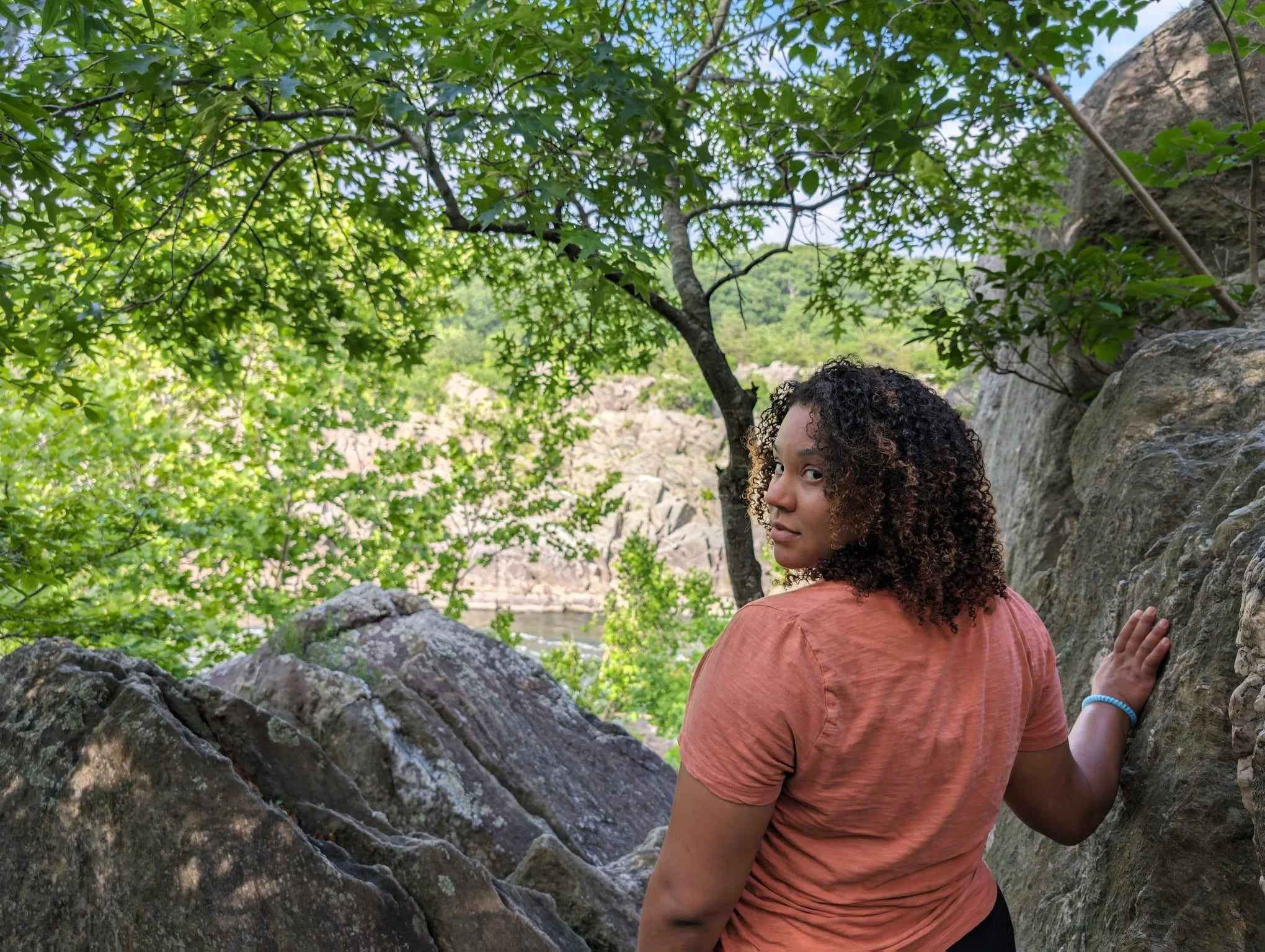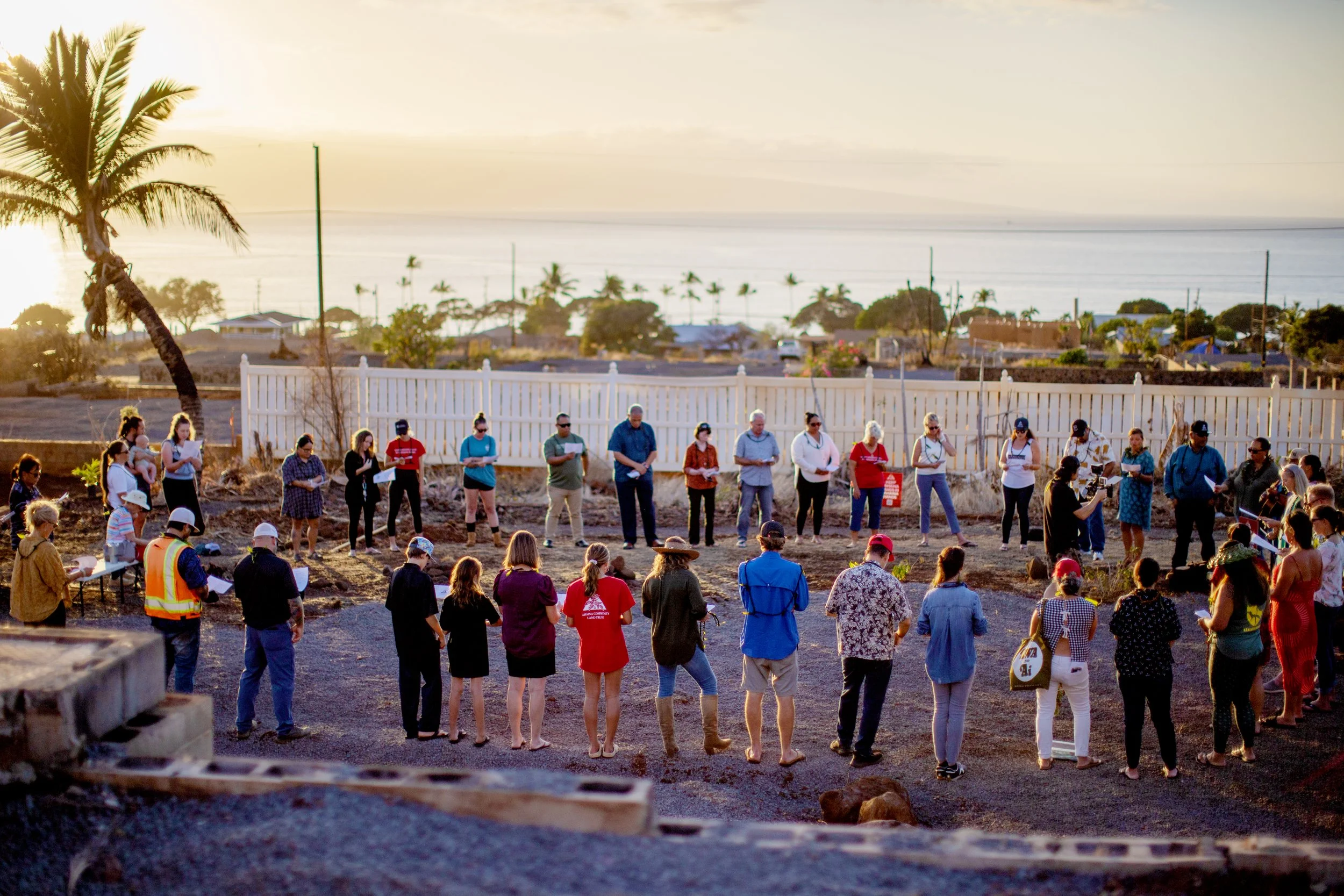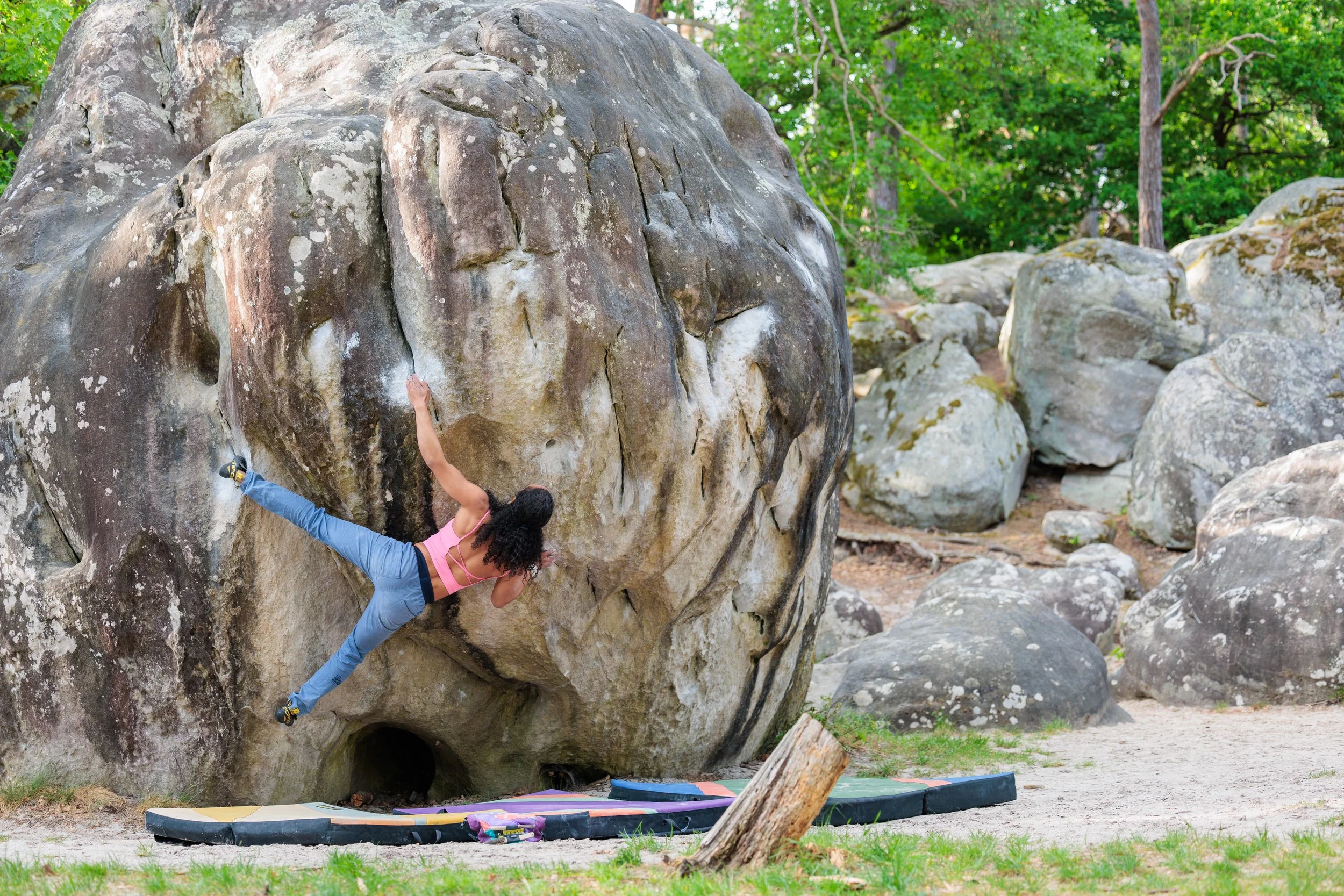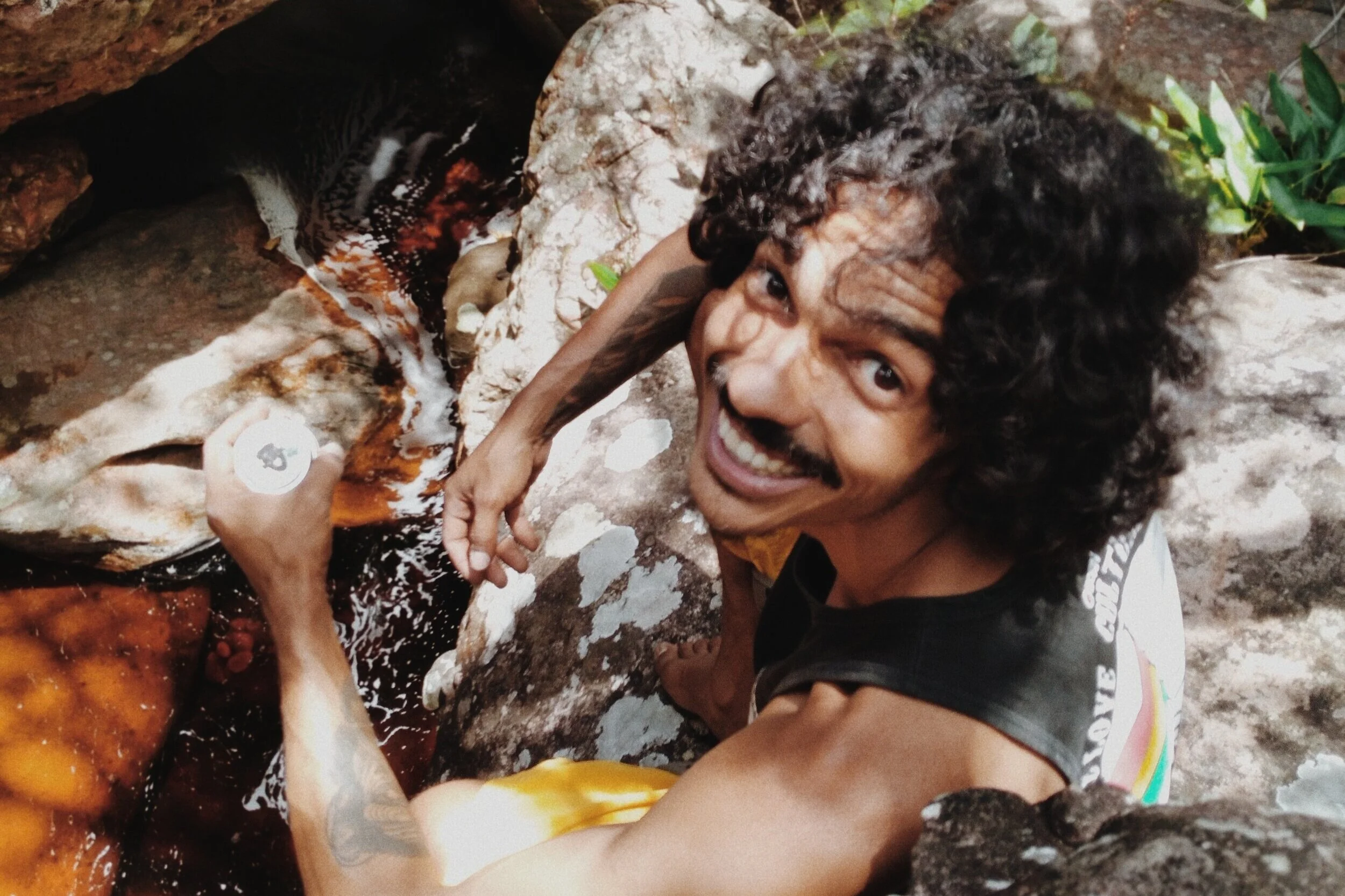A Refugee's Guide Towards An Inclusive Outdoors
Photo Credit: @katiemoum
In 2017, I had the most memorable experience interviewing ten BIPOC teenagers who had just gone camping for the first time through a local outdoor outreach program. Some were Latinx, a few were Black, and one was Polynesian. There were also refugees of all different races. For the first time in their lives, they had ventured into the Utah wilderness for two days of backpacking, fly-fishing, rock climbing, and fire-building.
As I learned about their experiences, the common theme was well known, but not pleasant to hear. They felt frustrated by the experience—not quite the overwhelming awe of the Utah backcountry that the staff members may have been aiming for. Can you guess why?
The benefits of the camping trip, such as developing environmental stewardship, leadership, outdoor skills and simply unplugging from technology were overshadowed by real-life constraints.
Photo Credit: @falaqkun
Some of those constraints included cultural non-alignment—were the students asked how they wanted to spend time outdoors or was the trip simply pre-packaged for them? Staff members also had unrealistic expectations concerning their clients’ long-term access to the Utah backcountry. They did not understand the socioeconomic barriers that their clients faced daily.
If I am being honest, the two-night outing left the teens feeling more culturally oppressed, more disassociated with the outdoors, and less likely to want to experience the outdoors in the future.
As I presented these outcomes to an all-white staff—they were shocked as they read some of the comments:
“I remember the day after the trip, I really wanted to go hiking with some friends to show them all the cool things I learned. Yeah, that didn’t happen because we all live way too far from the mountains. I’ll probably never go again.”
“We just don’t have time and money; I am always working to help my parents and my parents are working too.”
“It’s just that my parents don’t have a lot of money. Shit is expensive. Like I remember asking one of the trip leaders how much a backpack cost and he said $200 to $500 bucks. His boots were $100, and his fishing pole alone cost more than $500. That’s way too much for my parents to afford, and way too expensive for me.”
“Black people don’t play in the mountains. None of my family does it. It’s scary. There are animals— bears, lions, and maybe crazy people.”
“Being out there really scared me, at first. I didn’t want to get kidnapped or robbed.”
“My family camped all the time before we got here. You know, like in a refugee camp. So why would I spend time in a tent, out in the woods, if my parents worked so hard to get a roof over my head?”
What was envisioned to be a life changing trip ended up being another empty and savior-complex based outcome. Too often, unexpected outcomes lead to something that can be referred to as white failure—to fail at the process of assimilating an ethnically diverse group of people and to give up completely by referring to said race(s) as the other.
That was four years ago.
Recently, I randomly encountered one of the participants while spending time outdoors. But not the outdoors you may be thinking of—I met Bintu (pseudonym used to preserve privacy) at a park where he was lounging on a hammock and reading a book on personal development. Bintu was one of the refugees that I interviewed back in 2017. Back then, he was a teenage war refugee, living in Salt Lake City with his mom and his two younger siblings. The Bintu I met in the park was a 19-year-old college student, finishing up his second semester at the local university, who now considers himself to be a park enthusiast.
Photo Credit: @sammannfilms
After catching up on the nuances of life. We slowly shifted and started discussing his experience with the outdoor outreach program. Although he still seemed bothered by the entire experience, he had a lot to share. Much of what he experienced during that trip impacted him to this day. As we dug deeper, he continually brought up his love for spending his downtime at local parks—his version of being outdoorsy. And, since I wasn’t prepared to provide a formal interview, I have summarized key takeaways that he agreed to share with the readers here at Melanin Base Camp. So, without further ado, the following list provides a refugee’s guide towards an inclusive outdoors.
The Issue: Off-leash dogs can create unwelcoming outdoor spaces
For many refugees, dogs are not a friendly sight. Bintu mentioned how he loves coming to parks because they enforce on-leash policies more than they do on hiking trails. He recalled going on a small hike with some friends during his first semester in college and seeing “…all sorts of dogs running around, off-leash, and jumping on strangers.” For him, this was terrifying and traumatizing. He was severely attacked by a dog at a young age and dogs were also used as weapons of torture in his home country.
How to be more inclusive
This one made me reflect heavily on the way I have been going about trail-use when I bring my pup along. For the longest time I had taken my dog off-leash without a moment’s consideration. Start by asking, “How can I make the outdoors feel safer for others?”
Although having your pup off-leash may give off a sense of liberation for your dog, it can easily put others around you in an uncomfortable or scary position. It can make them feel threatened or unwelcome. Consider going to a dog park next time you want to take your dog off-leash. Trail run or mountain bike with a leash that you can manage and control.
Photo Credit: @trinwin
The Issue: Who defines “outdoorsy”?
In the middle of our conversation, Bintu mentioned, “…I am so outdoorsy. Out here at the park, chilling. It doesn’t get more outdoorsy than this! I know, I know… people like me aren’t always welcome in parks either, BUT this is still way more comfortable than hiking up a hill.” He emphasized heavily the power we all have to redefine these spaces and redefine language on what it means to be outdoorsy.
Why do outdoor companies and nonprofits conducting outreach to marginalized people focus on non-iterative experiences that dangle “the wilderness,” expensive gear, skill development and community building before their clients when they have no intention of following through? Don’t they understand that they are often doing more harm than good? Why not develop iterative programming that is as sustainable as it is inclusive?
How to be more inclusive
Being outdoorsy can look many different ways—It doesn’t have to be aligned with roughing it out in the wilderness. Recently, I started going on walks around my neighborhood, using urban pathways, and parks. It helps me remember not to place outdoor activities into different buckets or judge them based on elitist standards established by outdoor advertising. It’s important to challenge our biases which inherently stigmatize people who access the outdoors differently than us.
The Issue: Consumerism makes the outdoors less accessible
Outdoor companies are pro-assimilation, not pro-liberation.
One of the most impactful takeaways Bintu had from the trip was the expensive gear that the trip leaders were wearing. He mentioned, “[…] I was so shocked when they told me the price of their gear. Like damn, how can you afford that?” This struck him as an inaccessible lifestyle. Then he mentioned something else that really made me pause and reflect for a minute, “[…] I just don’t understand why all this stuff has to be so expensive. Like if THEY really want Black people like me to hike why not just make things less expensive?”
How to be more inclusive
Start by acknowledging that outdoor companies are companies. They operate to make a profit, and their activism is secondary to that. Consumerism is a disease, and we are at times symptoms of that disease. This really made me check myself as someone who has multiple backpacks, countless hiking shoes, variation of sandals, and loads of duplicate gear. I remember walking back to my car and asking myself, “WHY?” The next day I grabbed a bunch of my outdoor stuff and donated it. Consider handing gear off to local nonprofits that work with you, start your own gear collective, or give stuff out for free online through local BIPOC outdoor groups.
Check out this article to find gear libraries that serve marginalized communities.
The Issue: outdoor culture is hyper-focused on white male athletes
Why is it that the outdoor activities that receive the most attention involve climbing hard, paddling hard, biking steep lines or hiking fast? If you open any outdoor magazine, it will give you a window into American outdoor culture and how it hyper focuses on white male athletes.
What would it look like if intersectional feminism were at the center of the outdoors?
To simply put it, Bintu said it best, “[…] You know how we did all those activities on the trip? Yeah, I feel like it’s all shit manly men do. You know what I am saying? If women were at the center of this, things would be different.”
How to be more inclusive
Intersectional feminism can allow us to see the inequities in this world as intersected, rather than compartmentalized. Although not all inequities are equal, many of their root causes align with a long history of toxic masculinity, racism, and colonialism. Start by acknowledging this intersection within your activism—Rather than calling out spaces like the outdoors as racist, toxic, OR economically inaccessible, call them out with a more critical theory-based approach. These spaces have all these issues! In addition, it is important that we elevate feminist voices into these spaces—Nature is feminine and has been silenced for far too long. Let’s fight to change that.
An outdoors for all can become a reality.
Photo Credit: @savwendt
One of the last things Bintu mentioned that stuck with me was this idea that the outdoors for all can become a reality by listening. He said it very simply, “[…] You know how these outdoorsy people are always trying to tell us how to do the outdoors? I think it’s interesting that they never sit down and listen—Like, I am out here coming to parks every day, taking walks, listening to the birds, and I can put money on the fact that they don’t consider me as part of their community. It’s like they already established what this “outdoors” thing is and aren’t willing to listen or see anyone else. I guess that is the funny thing about white culture—It embraces itself more than it listens. Maybe it’s a self-preservation thing? I honestly don’t know… I just come out here and listen to the world. Maybe that’s what they need to start doing.”
How to be more inclusive
Listen.
Consider who’s not in the room or whose voice is being silenced.
Thumbnail Credit: @mattedpictures






















I also know that hunger disproportionately impacts Black Americans who make up nearly 30% of SNAP recipients. So why would I celebrate cuts to a program that is a lifeline for so many people?